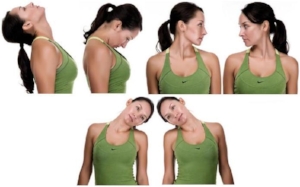Back to School Posture Tips
For kids, summer fun is almost done! The freedom to run, tumble, bounce and move around will soon be replaced by extended periods of sitting in class and lugging around heavy backpacks to and from school. With these demands, comes an increase in postural dysfunctions. We know kids are notorious for slouching in chairs and hunching over to support the weight of their backpacks. But these behaviors are programming bad posture and bad movement, which can have deleterious effects down the road.
In order to avoid the downward spiral of poor posture, leading to movement dysfunctions, leading to increased risk of pain and injury and even degeneration later in life, there are some steps kids can take to help combat the effects of typical school habits. Here are some tips:
Sitting Posture
Teach them the 90-90-90 rule. When seated, kids should have a 90 degree angle at their hips, knees & ankles with feet flat on the floor. Table height should be no more than 1-2 inches above bent elbows. Any higher and the child will have to “scrunch” their shoulders creating tension in the neck and trapezius muscles. Any lower and the child will hunch over to rest their forearms on the table. Although it may not be feasible to expect a child to hold this position throughout the day, you will want to queue them as much as possible. The more they strengthen these small postural muscles, the more good posture will become a habit.
Stretches at your desk
Doing stretches at your desk may be more or less tolerated, depending on your teacher. However, hopefully you have a teacher who understands the stress that prolonged sitting can have on the body. Here are some stretches that you can do while seated at your desk, which should cause minimum disruption and distraction for other students. These stretches are also great for adults who sit at the desk and computer all day.
Neck stretch – Tilt your head forward and backward, pointing your chin to your chest and then up to the ceiling. Next, rotate your head from left to right, looking as far behind you as you can. Then, tilt your from one side to the other side bringing your ear to your shoulder.
Shoulder – Across the Body Shoulder Stretch – sit up tall in your seat. Keeping your elbow straight, bring your left arm across the front of your body, support your left arm and deepen the stretch by supporting it with your right hand/arm. Then switch sides.
Chest – Seated Arms Behind the Back Stretch – sit at the front edge of your chair, feet flat on the ground, 90 degree angles at the hips, knees and ankles! Sit up straight and interlock the fingers of both hands behind your back. Slowly straighten your elbows, roll your shoulders back, and squeeze your shoulder blades together. To deepen the stretch, pull your hands down toward the chair. DO NOT arch your back!
Legs – Single Leg Pike Stretch – Raise your left leg in front of you, knee straight (as long as you have room in front of your). Contract your quad to hold your leg up. To create a deeper stretch, pull your toes back to the ceiling and toward your body. You should feel a stretch along the back of your leg. Then switch legs.
Backpacks
Backpacks are great for being able to take lots of items around with us. However, when loaded too much or not properly fitted, a backpack can put a tremendous load on a little frame, which can create postural and other neuromuscular dysfunctions. Here are some tips for proper backpack fitting and usage:
Choose a padded backpack, and look for wide shoulder straps to help disperse the weight over greater surface area
Pick the correct size, you do not want an oversized backpack
Load the backpack to no more than 15-20 percent of the child’s weight (American Academy of Orthopaedic Surgeons)
Put the heavier items towards the back.
If the backpack is too heavy and you can’t remove items, consider a backpack with wheels.
Wear both straps. Using only one strap will put all the weight on one shoulder and one side of the body. Wearing both straps creates a more even weight distribution.
Tighten the straps so the backpack is snug on the back. You do not want the backpack sagging below the hips, which tends to pull the child backward, causing him to hunch their backs to lean forward.
Authored by Premiere Spine and Sport Blog







